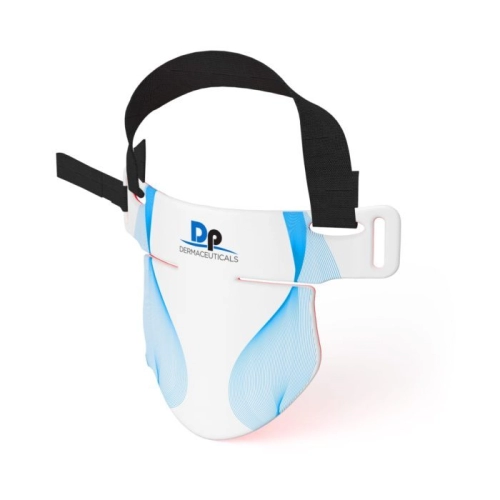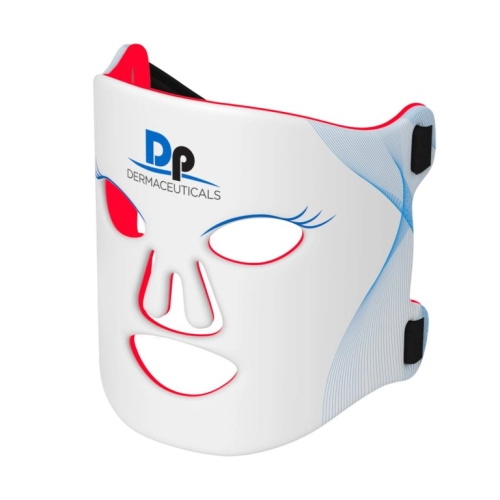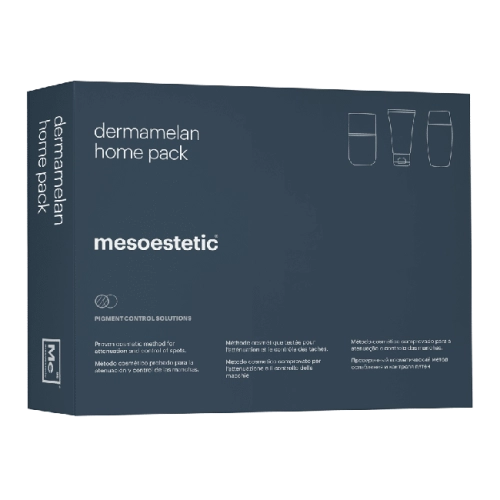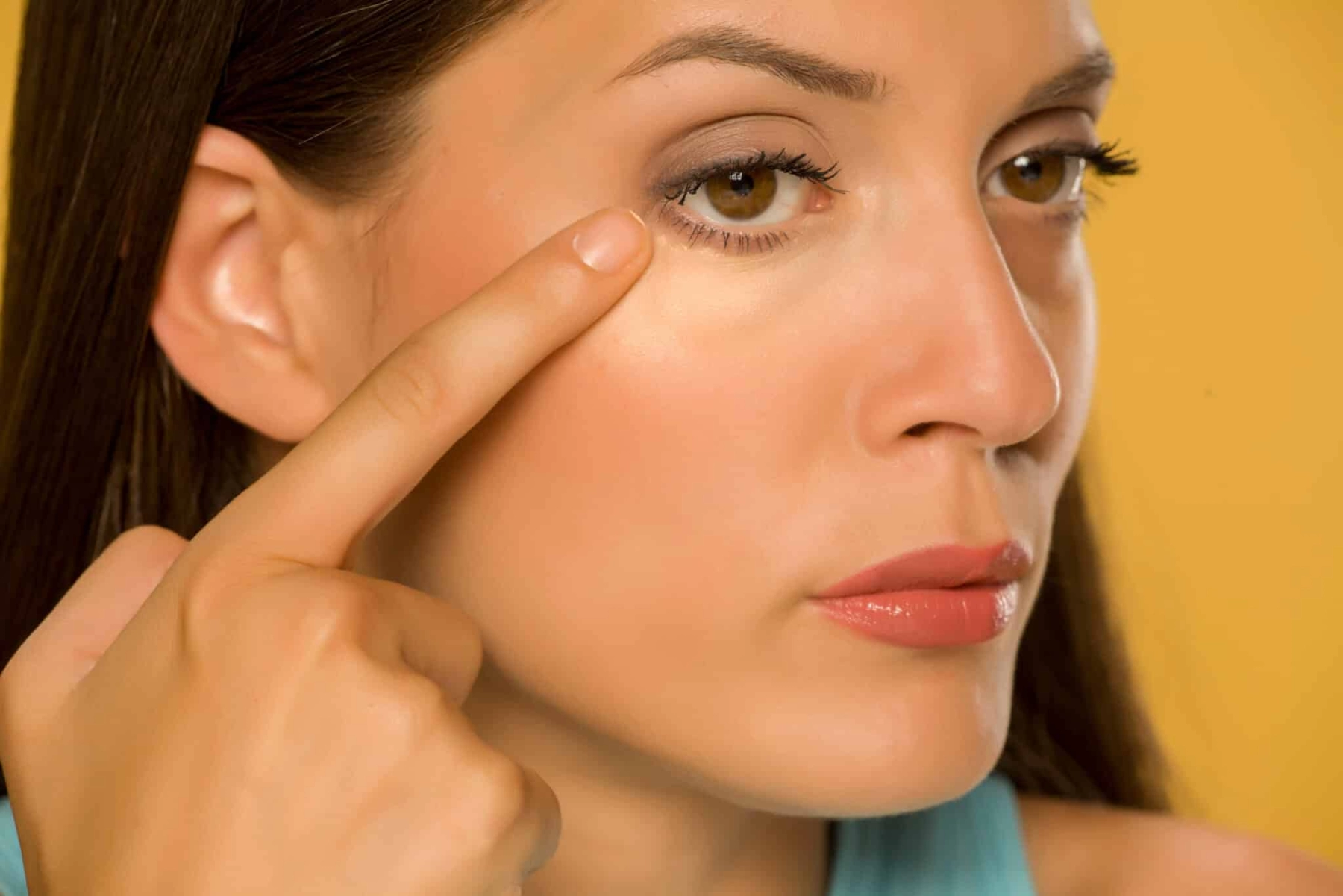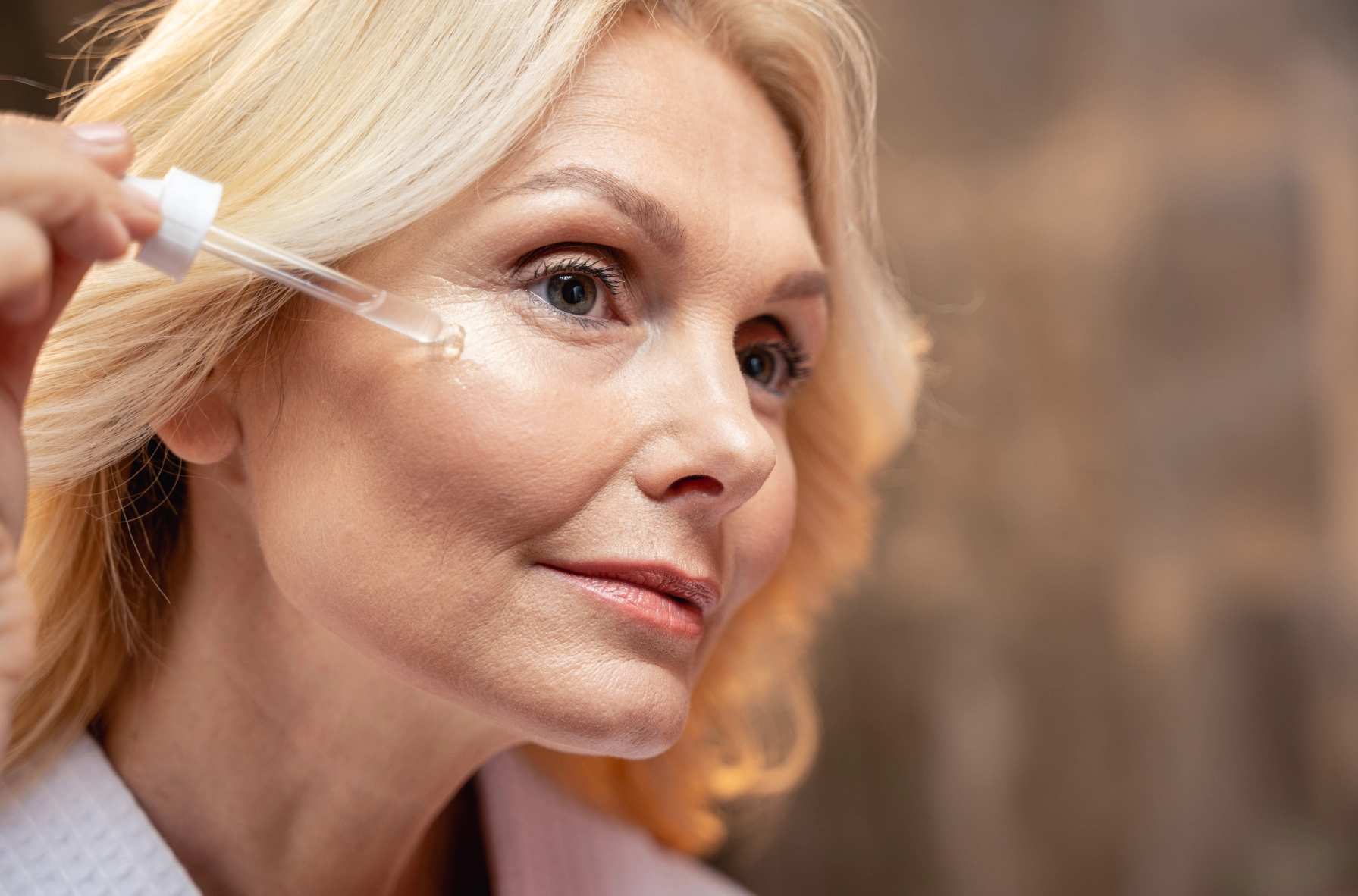Unlocking Clear Skin: The Comprehensive Guide to Pigmentation Removal Techniques, Tips, and Results

Many people struggle with uneven pigmentation and seek pigmentation removal treatments. Hyperpigmentation, characterized by the appearance of dark spots on the skin, can affect anyone regardless of age, gender, or skin type. These pesky spots can be caused by various factors, from sun exposure to hormonal changes. Thankfully, several effective treatments are available to help reduce the appearance of hyperpigmentation and restore a more even complexion. In this comprehensive guide, we’ll delve into pigmentation removal treatments, exploring professional and at-home options so you can make informed decisions about achieving the radiant, spot-free skin you desire.
Understanding Hyperpigmentation
Before we dive into any treatments, we must understand the different types of hyperpigmentation. They include:
- Sunspots or Age Spots: Caused by cumulative sun exposure over time, these spots are typically small, dark areas that appear on areas exposed to the sun, such as the face, hands, and shoulders.
- Melasma: Often triggered by hormonal changes, melasma presents as more extensive, irregularly shaped patches, commonly on the cheeks, forehead, and upper lip.
- Post-Inflammatory Hyperpigmentation (PIH): Resulting from skin inflammation or trauma, PIH appears as dark spots after the healing process, commonly seen in acne scars or cuts.
Dr Nadja Haub says:
Many people seek treatments for uneven pigmentation of the skin. What is important to know is that there are different types of pigmentation, and each type requires a different treatment. Often, people come to my clinic and have already spent quite a substantial amount of money on treatments that are not working for their particular type of pigmentation.
| Type of Pigmentation | Treatment Options | How difficult is it to treat |
|---|---|---|
| Dark Spots | IPL
Laser Cosmelan Mask or Peels |
Fairly Easy |
| Melasma | Prescription Creams
Cosmelan Mask or Peels |
Initially Easy But Reoccurs Very Quickly |
| Freckles | IPL
Laser Good Skincare |
Quite Difficult |
| Postinflammatory Hyperpigmentation | Prescription Creams
Cosmelan Mask |
Reoccurs Easily |
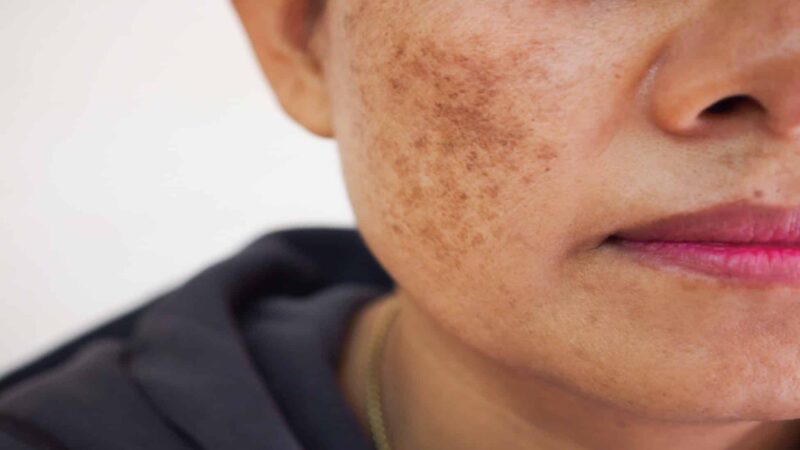
When you look at this table, you can see that each type of pigmentation requires a different treatment. Let’s delve a bit deeper into this.
Melasma
Hormone Management: If hormonal changes contribute to melasma, addressing underlying hormonal imbalances or discontinuing birth control methods might be considered. For example, if your melasma got worse while taking a birth control pill, it could be caused by the medication. You may consider stopping or changing it to an Intrauterine Device such as the copper IUD or the MIRENA.
Over The Counter Creams: Many creams are available in supermarkets or at the chemist that promise to fade pigmentation. Please ensure you choose a product from a reputable brand that works based on science.
Prescription Creams: The gold standard for treating melasma remains The Kligman Solution. A doctor must prescribe this cream, and you apply it every evening for the first 12 weeks. After that, you must vigorously apply it twice or thrice weekly to maintain your results. This is very important so that the melasma does not reoccur. The Kligman Solution contains a combination of hydroquinone 4%, dexamethasone 0.1% and retinol. It usually takes 4 to 6 weeks for the melasma to start fading.
Prescription Medicine: Tranexamic acid is a tablet that doctors commonly use to treat heavy periods, and the FDA approves it for that indication. It is not yet approved for the treatment of melasma, but several studies proved that it helps fade melasma. Due to that reason, many doctors prescribe tranexamic acid under the Section 29 Act of safe medicines.
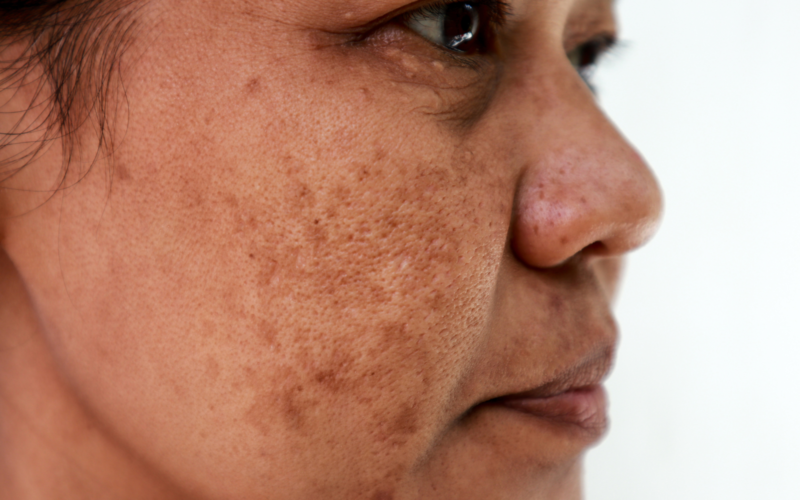
Dark Spots
Dark Spots are very different to melasma. They are usually caused by too much sun exposure and aging, and some people tend to get them due to their genetic makeup and predisposition. Compared to melasma, dark spots are round areas with sharp edges on the skin that look darker. Melasma resembles more of a flat patch that has got fuzzy edges. On top of that, dark spots do not occur with any hormonal changes.
Accordingly, dark spots require different treatments compared to melasma. Whereas melasma often does not get better with light-based therapies, such as IPL (Intense Pulsed Light) or laser, dark spots respond to that quite well. If you want to eliminate your dark spots, we usually recommend a combination of a high-quality anti-pigmentation cream and IPL or laser.
Other treatment options are microneedling and cryotherapy.
Post-Inflammatory Hyperpigmentation
Many people get darker skin in areas after a bothersome pimple, acne or an injury to the skin. This can result in uneven pigmentation and skin texture. In medical terms, this is called post-inflammatory hyperpigmentation. Often, this type of pigmentation is challenging to treat, but high-quality anti-pigmentation creams, the Kilgman Solution or the Cosmelan peel can help.
Again, light-based devices such as laser or IPL are not a great option because of the risk of making it worse in 10 15% of the cases.
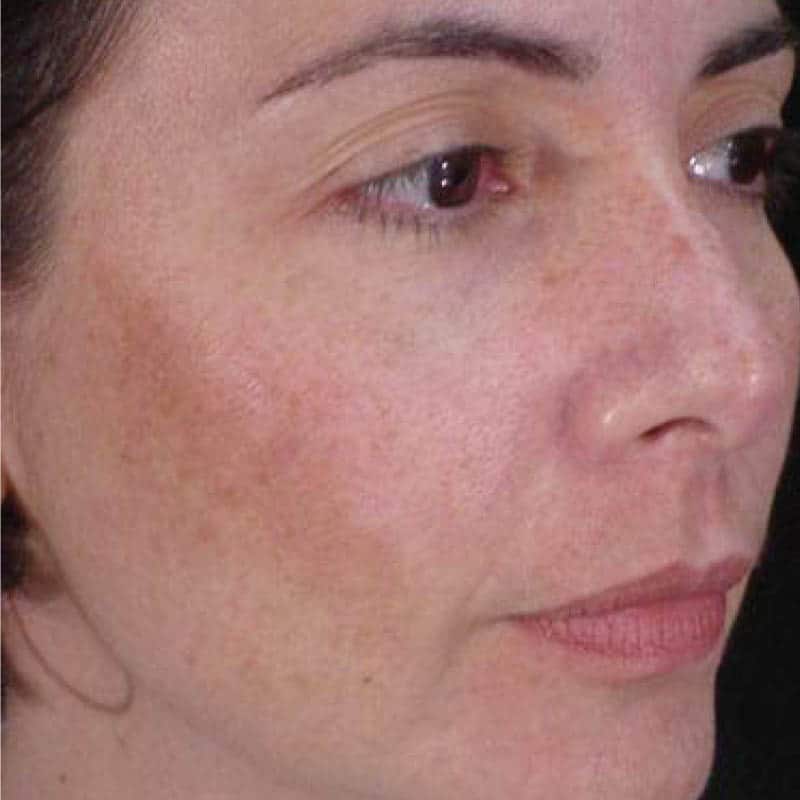
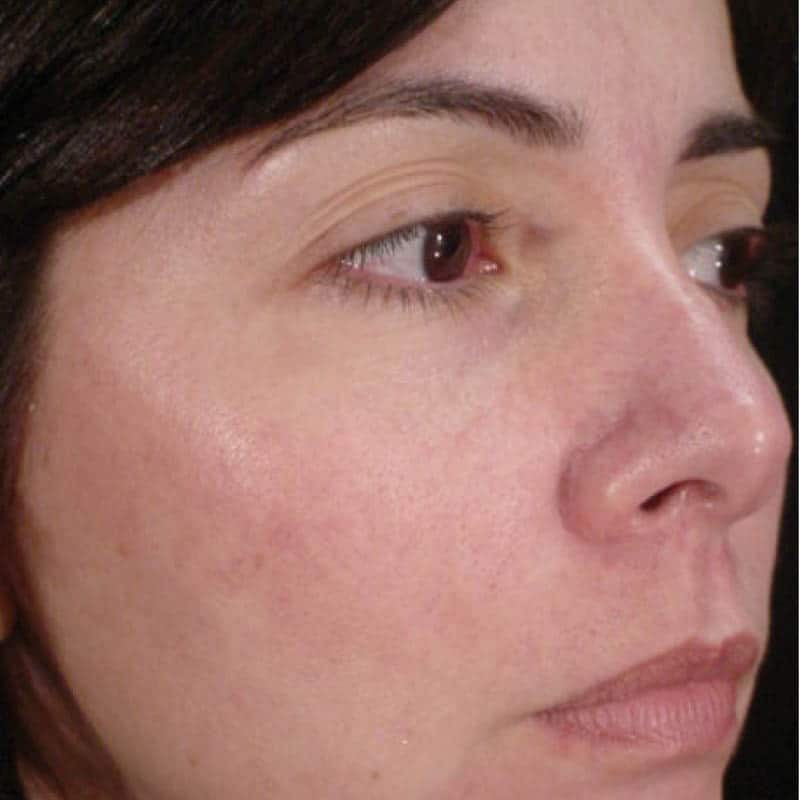
Freckles
Freckles are small, flat, round spots on the skin that are usually tan or light brown. They are typically more noticeable in people with fair skin and can appear on any part of the body but are most commonly found in areas exposed to the sun, such as the face, arms, and shoulders. Freckles are caused by an increase in the production of melanin, the pigment responsible for the colour of our skin, hair, and eyes.
Freckles are often genetic, meaning they can run in families. They tend to develop during childhood and adolescence, and sun exposure may influence their appearance.
Laser or IPL are probably the best pigment removal treatments for freckles. If you opt for one of these facials, using a high-quality anti-pigmentation cream between treatments is vital. This ensures that your freckles don’t reoccur and enhances the overall treatment outcome.
Are there any medical conditions that can cause uneven pigmentation?
Yes. Several medical conditions can cause uneven pigmentation. A doctor can assess your type of pigmentation and suggest the best treatment option. If your pigmentation is due to a medical problem, you may require prescription medications to improve or remove this pigmentation problem.
- Vitiligo: Vitiligo is a skin disorder where the cells that produce melanin, the pigment responsible for skin colour, are destroyed. This leads to patches of depigmented or hypopigmented skin.
- Albinism: Albinism is a genetic condition that produces little or no melanin in the skin, hair, and eyes. This leads to light or white skin and other associated visual and health issues.
- Tinea Versicolor: This is a fungal infection that can lead to uneven pigmentation in light or dark patches on the skin. It is caused by an overgrowth of yeast on the skin.
- Addison’s Disease: This rare disorder affects the adrenal glands and can lead to changes in skin pigmentation, often causing darkening or bronzing of the skin.
- Pityriasis Alba: Commonly seen in children, this condition results in light patches on the skin, often on the face. It is thought to be related to eczema and usually resolves independently over time.
- Hemochromatosis: This condition where the body absorbs too much iron from the diet, leading to iron buildup in various organs, including the skin. This can cause a bronzing effect on the skin.
- Peutz-Jeghers Syndrome: A rare genetic disorder causing polyps in the gastrointestinal tract, it can lead to dark spots on the lips and around the mouth.
- Drug Reactions: Some medications can lead to changes in pigmentation as a side effect. For example, certain chemotherapy drugs, antimalarial medicines, and some antibiotics.
What is the best pigmentation removal cream?
When looking for a high-quality pigmentation cream, consider the following factors:
- Ingredients: Look for ingredients that are proven to be effective in treating pigmentation issues. Some key elements to consider include:
- Vitamin C: Known for its brightening and antioxidant properties.
- Niacinamide: Helps regulate melanin production and reduce inflammation.
- Alpha Hydroxy Acids (AHAs): Such as glycolic acid and lactic acid, can help exfoliate the skin and fade pigmentation.
- Retinoids: can promote cell turnover and help fade dark spots over time.
- Licorice Extract: Contains glabridin, which has skin-lightening properties.
- Kojic Acid: Often used to lighten dark spots.
- SPF Protection: Sunscreen prevents further pigmentation and protects your skin from UV damage. Some pigmentation creams include SPF for daytime use.
- Clinical Evidence: Look for products from reputable brands that have been clinically tested and proven effective in treating pigmentation.
- Reviews and Recommendations: Read reviews and recommendations from trusted sources, such as dermatologists, skincare experts, or fellow users who have experienced positive results with the product.
Remember, consistent and diligent product use, good skincare routine, and sun protection will improve results over time. Always prioritize your skin’s health and safety when considering any new skincare product.
Check our selection of pigmentation removal creams here.
Why you should see a doctor for your pigmentation removal
In summary, seeking medical advice for pigmentation issues is crucial to ensure an accurate diagnosis, personalized treatment, and overall skin health. It’s a proactive step toward achieving the best possible outcome and maintaining your well-being.
- Accurate Diagnosis: A proper diagnosis by a qualified medical professional ensures that you receive the proper treatment for your specific type of pigmentation.
- Tailored Treatment: Each pigmentation disorder requires a different approach to treatment. A dermatologist can determine the most suitable treatment plan based on your skin type, medical history, and the specific type of pigmentation you have. This personalized approach increases the likelihood of successful outcomes.
- Professional Expertise: Doctors and other medical professionals specializing in skin health have the knowledge and experience to diagnose pigmentation disorders accurately. They are trained to differentiate between benign conditions and those that require medical intervention.
- Avoiding Complications: Incorrect self-diagnosis or self-treatment can worsen pigmentation issues or lead to undesirable side effects. A doctor can help you avoid potential complications by recommending safe and effective treatments.
- Monitoring Progress: Regular visits to a doctor allow for close monitoring of your condition’s progress. Your treatment plan can be adjusted if necessary, ensuring optimal results.
Book An Appointment at Satini Cosmetic Clinic
If you want to learn more about our pigmentation removal treatments, please get in touch with us to speak to our doctor. Dr Nadja Haub can assess your skin and diagnose what type of pigmentation you have. Based on that, we can suggest what treatment works best and is safest for you.

